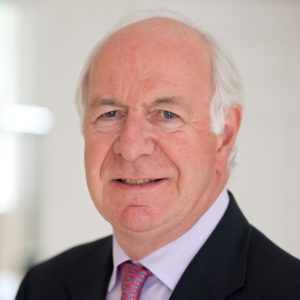medwireNews: Analysis of real-world data indicates that the recombinant human growth hormone (rhGH) somatropin is well tolerated and effective for children with a range of growth hormone disorders (GHDs) and other conditions associated with short stature.
“The results for the full KIGS cohort of 83,803 patients with a follow-up of 322,576 [patient–years] reinforce that pediatric rhGH therapy effectively increases short-term height gain and adult height for patients with GHD and non-GHD conditions, with no new serious adverse effects recognized”, report Adda Grimberg (Children’s Hospital of Philadelphia, Pennsylvania, USA) and co-investigators.
The KIGS database was initiated in 1987 and includes safety information for all children in 52 countries who were treated with rhGH therapy before 2012, the researchers explain in The Journal of Clinical Endocrinology & Metabolism.
Overall, 58% of the cohort were boys, 70% were White and the median age at rhGH initiation was 10.7 years, with a median initial dose of 0.2 mg/kg per week. Median treatment duration was 2.7 years and median follow-up in the database was 3.1 years.
Both the average and median height standard deviation score (SDS) at time of beginning treatment were –2.9.
The most common indication for rhGH was idiopathic GHD (46.9%; 39.5% isolated and 7.4% combined), followed by non-GHD short stature disorders, most commonly small-for-gestational age (9.5%), Turner syndrome (9.2%) and idiopathic short stature (8.2%).
Overall, 23,163 adverse events (AEs) were reported for 14.4% of the patients, giving an all-cause AE rate of 94.2 cases per 1000 patient–years.
But just 3.1% of the children developed 3108 AEs considered to be potentially treatment-related and it was rare for patients to require drug dose reduction (0.2%) or discontinuation (0.6%) because of treatment-related AEs.
The most common treatment-related AEs were headache (0.4%), scoliosis (0.2%), arthralgia (0.2%), elevated insulin-like growth factor-1 (0.2%), extremity pain (0.1%), melanocytic nevus (0.1%), benign intracranial hypertension (0.1%) and epiphysiolysis (0.1%).
In addition, 0.7% of children experienced serious (S)AEs potentially related to treatment, resulting in 0.4% discontinuing treatment, with the most common of these events being craniopharyngioma (0.1%) and scoliosis (0.1%).
Analysis showed that all-cause SAEs were more common in children who received somatropin for 3 or more years and became more frequent after the first year of treatment, regardless of puberty status, say Grimberg and co-authors.
There was no relationship between rhGH dose and frequency of SAEs within each of the diagnostic patient groups except that all-cause SAEs were significantly more common in idiopathic GHD patients given an average dose in the third or fourth quartile versus the first quartile.
Nevertheless, the all-cause and treatment-related SAE rates were lower in the idiopathic GHD than congenital GHD diagnostic groups (1.9 vs 6.4% and 0.3 vs 0.6%, respectively).
During the study period, 0.4% of patients died including 24 treatment-related deaths, of which 20 were tumour-related, one occurred after intracranial haemorrhage and three were not specified.
Deaths were most common among children receiving treatment for medulloblastoma (3.7%) and other cranial (2.5%) or extracranial (2.2%) tumours, and were more common in those who had received rhGH for less than 2 years than for a longer duration (0.5 vs 0.3%).
While describing their safety findings as “reassuring”, the authors say that the incidence of type 2 diabetes was “higher than expected”, affecting 21 patients who likely had predisposing factors before treatment. “It is therefore important to monitor glucose homeostasis in patients with risk factors for developing type 2 diabetes when treating with rhGH”, the researchers advise.
Efficacy data was available for 7911 patients who received rhGH for at least 1 year and had height data after a year.
Height SDS increased in patients in all diagnostic groups, with the greatest median gain reported for children with congenital GHD (1.01) and the smallest gain in patients with extracranial malignancy (0.38), perhaps due to their later initiation of treatment than other groups, the authors observe.
Patients who were prepubertal at baseline had a greater gain than patients who were pubertal or entered puberty within a year of beginning treatment, and girls appeared to have more prepubertal or total gains in height SDS than boys, the researchers report. In addition, puberty initiation in somatropin-treated children was “slightly delayed” compared with the general population, they observe.
Grimberg et al emphasize that longer follow-up of the KIGS cohort “is important to reveal long-term sequelae such as cancer and cardiometabolic conditions as individuals attain ages at which these events occur more commonly.”
“Nevertheless, data from KIGS reflect real-life clinical practice situations that are complementary to clinical trials of rhGH therapy”, they say, and therefore “confirm the safety and efficacy of pediatric rhGH therapy as used in clinical practice.”
By Lynda Williams
medwireNews is an independent medical news service provided by Springer Healthcare Ltd. © 2022 Springer Healthcare Ltd, part of the Springer Nature Group


